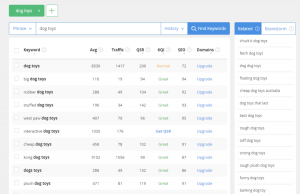By listening to customer needs and setting up streamlined ways for customers to interact with your business, you can improve customer satisfaction and boost retention.
Small business owners know that the customer is the top priority, but so many tasks demand your time that customer service often gets lost in the shuffle.
Not only is it a good practice to keep in touch with customer needs, statistics show it costs five times more to acquire a new customer than to retain an existing one. Not only that, according to one study a 5% increase in customer retention can increase profit by more than 25%.
Needless to say, it makes good business sense to keep your finger on the pulse of your customers’ wants and needs. While not all small businesses have the luxury of a customer service department, there are many steps you can take to improve customer satisfaction.
Listen to Customers
Customers want to feel valued and heard. Be open to all feedback and make sure you respond in ways that make your customers feel listened to. This will create a greater affinity for your company and encourage continued honest feedback. Sometimes the best way to get feedback from customers is to just ask! It may seem obvious, but many small business owners overlook this simple step. Don’t let feeling awkward about it hold you back.
Build rapport with your customers, and start with those you have the closest relationship with. It doesn’t have to be a daunting formal conversation; simple, open-ended questions about a customer’s experience with your company, your product, or customer service can produce valuable insights.
Ready to reach more customers? Create a simple survey on one of the many form-making platforms such as Google forms and link to it from your homepage, share it on your social media platforms, or send it in a newsletter. Allow customers to remain anonymous for more honest feedback.
Make it a habit to solicit feedback, and consider offering incentives like a free download or a discount on their next service to thank customers for taking the time. Be sure to keep track of all this valuable information. Combine this survey and interview data with feedback from customer service for a more complete picture of customer experience. Analyze your compiled data for patterns and opportunities to improve.
Monitor Social Media
Keep an eye on those social media accounts! Make sure you’re monitoring and responding to all mentions, comments, and private messages. Whether positive, negative, or neutral, every message should receive a direct response. This is vital to ensure that customers know their opinions matter to you and your company.
Social media has transformed customer service; people often vent their frustrations with companies on social media, so it’s important to be aware of what’s being said about your company and get out ahead of any issues.
Not only is it important to know what comments people are directing at your company, but be sure to search your company name, abbreviations and relevant hashtags regularly. Some customers will voice their feedback without directly messaging or linking to the company’s account.
Social listening tools allow businesses to automate the process of monitoring social media by gathering all comments, whether or not customers directly mention a company. Many of these tools also track relevant keywords, customer demographic information, and overall sentiment.
Social media is also a great place to solicit feedback! Ask simple and direct open-ended questions of your followers in posts, share your surveys on your pages, and encourage customers to reach out in comments or messages with any comments, questions, commendations and complaints. Not only does this make customers feel listened to, but you can add this data in with the rest of your customer feedback for even more insight.
Improve Response Time
It’s important that you address all customer correspondence directly, professionally and in a timely matter. These types of communications can build up, so even if your business doesn’t have a dedicated customer service professional, be sure to check regularly.
A great way to handle this with a small team is to dedicate 30 minutes every day to check all inboxes and respond, which can ensure regular and timely responses. You can even block this time out on your calendar as a reminder.
Facebook business pages automatically monitor your average response time and report it to customers once you reach a certain threshold. This can let customers know how quickly to expect a response, help you keep track of how you’re doing, and even provide motivation to improve.
If you find you’re getting a lot of similar questions and feedback from customers, why not try out a chatbot? Chatbots were once reserved for large companies that could afford to develop them, but now Facebook and many website-builder platforms offer the option to create your own chatbot.
Consider New Ways to Offer Simple & Flexible Payment Options
Technology has made it simple to collect payments, with friends easily splitting bills in real time on P2P networks, so you may wish to consider something beyond checks, which are still the most commonly used form of payment for B2B transactions. SMBs willing to expand options provide what customers expect: the same convenience they’re accustomed to in their personal lives in their interaction with other companies as a business. One example is to provide a process whereby a customer can access a secure payment platform that allows them to easily make payments without ever revealing their sensitive account information. Integrating payments with your own business’ financial operations also helps to streamline processes end to end.
Free Up Time & Resources to Dedicate to Customer Service
As much as business owners would like to dedicate time to improving value for customers, the reality of running a small business means that there’s rarely enough time for everything. If customer service tends to get pushed to the bottom of your to-do list, take steps to free up some time in your day-to-day schedule.
Automating administrative back-office tasks can save you significant time so you and your team can spend less time pouring over spreadsheets and put the focus back on the customer.
In business, it’s always time to focus on what matters most: the customer! By keeping the conversation going with customers, addressing any issues quickly, using feedback to find opportunities to improve, and offering convenient payment options, even a small team can deliver ongoing customer satisfaction and boost retention.
This article was originally published on the author’s blog and was reprinted with permission.
Business & Finance Articles on Business 2 Community
(53)
Report Post




